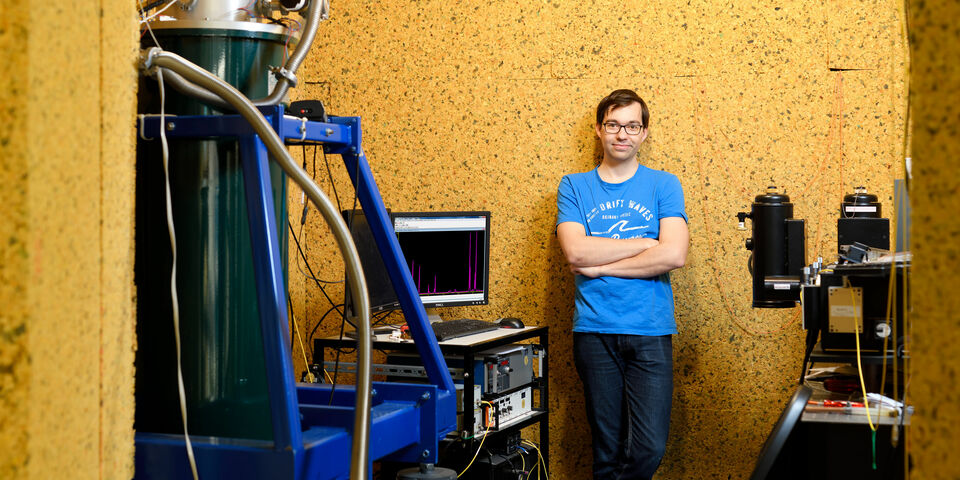Quantum dots are nano particles made of semiconductor material that behave like atoms in some respects. For example, they allow electrons to bind to them with a specific spin – a binary quantum characteristic that can best be compared to the spinning around of a top (clockwise or anticlockwise). That spin can be used to store information, so that it functions as a bit for a quantum computer that makes calculations based on the rules of quantum mechanics, allowing it to carry out certain tasks at an infinitively higher speed than current computers.
In principle, electron spin can be manipulated with a magnetic field, PhD candidate Hans Tholen explains. “However, the disadvantage of this technique is that it’s unfeasible to manipulate individual quantum dots with the required high magnetic fields, with a strength of up to 10 Tesla. For that, you need a huge magnet, whereas the quantum dots are extremely small – about ten nanometers.” This is the reason why it’s virtually impossible to create a magnetic field for each individual quantum dot.
Stretching
That is why Tholen, who conducted his doctoral research in the Photonics and Semiconductor Nanophysics group, started from a more or less opposite idea: he kept the magnetic field constant and tried to adjust the quantum dot’s response to the value of the magnetic field. That interaction between the electron spin and a magnetic field is determined in part by the specific characteristics of the semiconductor material from which the quantum dot is made, the physicist explains. “And you can adjust that with a mechanical stress; by slightly pressing or stretching the quantum dot.”
Tholen conducted research into, among other things, quantum dots in nanowires – miniscule pillars with a diameter of a few hundred nanometers and a length of a few micrometers. “You can make those quantum dots by adding a slice made from a different material during a nanowire’s growth process,” he explains. “We were looking for a situation in which you can shift the force of the interaction between the electron spin and the magnetic field from negative to positive by varying the tractive force on the nanowire. This is necessary in order to manipulate the electron spins.”
Quasiparticle
Fortunately, Tholen’s calculations showed that the component of the magnetic field perpendicular to the quantum dot’s surface, in the longitudinal direction of the nanowire, met that requirement. In fact, it wasn’t in this case the interaction with an electron, but with the ‘hole’ left by an electron after it is brought to a higher energy state with the use of some laser light. “This hole is a quasiparticle that behaves like an electron with opposite charge and spin,” the PhD candidate explains.
However, such a theoretical prediction is quite worthless if it can’t be confirmed in practice. That is why Tholen placed a nanowire on a so-called piezo, a type of material that shrinks or expands, depending on the voltage to which it is exposed. “That allowed us to stretch the nanowire, and therefore the quantum dot as well, with approximately one tenth percent,” he says. “We caried this out in the center of a superconductive electromagnet, cooled with liquid helium in a two-meter-high cryostat.”
Larger forces
He managed to observe the result of this stretching using laser light that he directed from above through the central shaft of the electromagnet. Quite a task, but the results of the experiment matched miraculously well with the theoretical models, according to the PhD candidate. “In fact, they matched so well that we were actually rather surprised,” he says laughingly.
However, it will take some work before it’s possible to apply this method in a quantum computer. “The amount of stretch I applied was sufficient to show that the principle works, but you need larger forces for a practical application.” How best to generate these forces on such a small scale is for others to figure out. Like many of his fellow PhD students, Tholen will start to work for chip machine manufacturer ASML this month.


Discussion